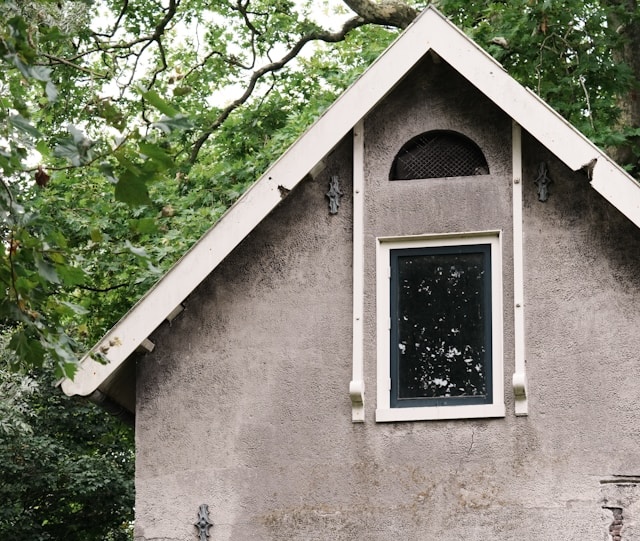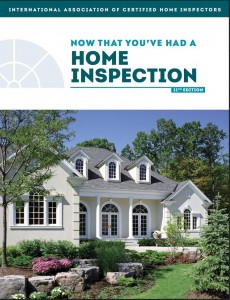Drastic reductions in energy costs can be achieved through very simple changes, most of which homeowners can do themselves.
See What You’re Missing: How Infrared Thermal Imaging Uncovers Hidden Home Issues
October 20, 2025Infrared thermal home inspections in Atlanta reveal hidden home issues through temperature variation detection. You’ll see moisture intrusion, insulation gaps, electrical hotspots, and HVAC inefficiencies displayed as color-coded visual maps—red for warm areas, blue for cool. This technology complements traditional inspections by identifying problems before they cause significant damage. For homebuyers, it provides negotiating leverage; for sellers, it allows proactive repairs. Understanding these invisible threats transforms potential disasters into manageable maintenance issues.

Introduction to Infrared Thermal Imaging
Although homeowners often focus on visible defects during inspections, infrared thermal imaging technology operates on a different principle entirely. This advanced diagnostic tool detects temperature variations across surfaces that remain invisible to the naked eye. During an infrared camera home inspection, the equipment captures heat signatures emitted by objects and structures, creating a visual map of temperature differentials.
These thermal patterns reveal significant information about a property’s condition—identifying moisture intrusion, insulation gaps, electrical hotspots, and HVAC inefficiencies without disturbing walls or ceilings. The technology translates infrared radiation into a color-coded image: warmer areas typically appear red or orange while cooler regions show as blue or purple. When interpreted by qualified professionals, these thermal images provide valuable insights that complement traditional inspection methods, helping you make informed decisions about your property investment.
Greene Home Inspection’s Use of Thermal Imaging
At Greene Home Inspection, serving the Atlanta metropolitan area, thermal imaging has become an integral component of their thorough inspection protocol. When you’re seeking thermal home inspections in Atlanta, their certified technicians use advanced infrared cameras to supplement traditional visual assessments.
Their process involves scanning interior and exterior surfaces to identify temperature anomalies invisible to the naked eye. This technology enables Greene’s inspectors to locate moisture intrusion behind walls, detect insufficient insulation, identify overheating electrical components, and pinpoint energy loss areas without destructive testing.
You’ll receive detailed thermal images alongside your inspection report, complete with professional interpretation of the findings. This evidence-based approach helps you understand potential issues more clearly and make informed decisions about repairs or negotiations. Greene’s integration of this technology demonstrates their commitment to extensive property assessment.
Hidden Issues Infrared Imaging Helps Detect
Infrared thermal imaging can reveal five critical hidden issues that traditional visual inspections might miss in your home. First, it detects moisture intrusion behind walls and ceilings before visible damage appears. Second, it identifies insulation gaps and thermal bridging that cause energy loss and comfort issues. Third, it spots electrical hotspots from overloaded circuits or faulty connections that pose fire hazards. Fourth, it can uncover pest infestations by detecting subtle heat signatures from nests or activity behind walls. Fifth, it reveals hidden HVAC ductwork leakage that wastes energy and reduces system efficiency. These hidden home issues often remain undetected until they’ve caused significant damage or safety concerns, making thermal imaging an invaluable diagnostic tool for proactive homeowners and thorough inspections.
Moisture Intrusion and Water Leaks
Water damage often goes undetected until it’s caused significant structural harm, but thermal imaging can ferret out moisture problems long before visible signs appear. When water infiltrates your home’s structure, it creates temperature differences that infrared cameras readily identify as cooler areas compared to surrounding dry materials.
This advanced moisture detection technology reveals leaking pipes behind walls, roof penetrations, basement seepage, and condensation issues without requiring destructive investigation. You’ll see exactly where water travels after entering your home, helping pinpoint the true source rather than just symptoms.
The early identification of moisture intrusion prevents costly repairs, toxic mold growth, and structural degradation. Unlike traditional inspection methods that rely on surface indicators, thermal imaging detects the hidden moisture that threatens your home’s integrity before it becomes visible.
Insulation Gaps and Energy Loss
When properly sealed and insulated, your home maintains comfortable temperatures while minimizing energy costs, but thermal imaging reveals where this thermal envelope fails. Infrared technology clearly displays temperature differentials across walls, ceilings, and floors, making insulation gaps immediately visible as cold or hot spots depending on the season.
These scans help identify areas where insulation has settled, been improperly installed, or is entirely missing. Energy loss detection through thermal imaging pinpoints exactly where conditioned air escapes your home, allowing for targeted repairs rather than costly guesswork. This precision identifies specific trouble spots in attics, around doors and windows, and within wall cavities—places traditional inspections might miss.
Electrical Overheating and Fire Risks
Potentially dangerous electrical issues often remain invisible until they’ve progressed to hazardous levels, but thermal imaging can detect these problems before they cause catastrophic damage. When electrical components overheat, they appear as bright, distinctive hot spots on a thermal camera, allowing your inspector to identify potential fire hazards that conventional inspections might miss.
- Circuit breakers showing unusual heat signatures indicating they’re working harder than normal to contain excess current
- Overloaded outlets glowing bright orange or yellow against cooler wall surfaces, revealing dangerous current levels
- Hidden junction boxes with loose connections manifesting as concentrated heat points behind walls
HVAC and Duct System Issues
Thermal imaging effectively reveals hidden problems within your home’s heating, ventilation, and air conditioning systems that aren’t visible during standard inspections. During an HVAC inspection in Atlanta, infrared cameras detect temperature inconsistencies that indicate leaking ductwork, blocked vents, or failing components.
The technology pinpoints exactly where conditioned air escapes from ducts, showing you energy loss that increases utility bills. It also identifies overheating motors or electrical connections before they fail completely. When your system isn’t cooling or heating properly, thermal imaging can locate the specific areas of concern rather than requiring extensive disassembly.
This precise diagnostic approach means repairs can be targeted and efficient, saving you money while ensuring your HVAC system operates at peak performance throughout Atlanta’s extreme seasonal temperature changes.
Structural and Roof Leaks
While HVAC issues affect your home’s comfort, water infiltration threatens its very structure. Infrared cameras excel at structural leak detection by revealing temperature differences where moisture has penetrated building materials. These cold spots often appear before visible damage occurs, allowing you to address problems before they require costly repairs.
Thermal imaging can identify:
- Water migration paths behind walls and ceilings that remain invisible to the naked eye
- Moisture accumulation in roof systems where traditional inspections might miss early-stage leaks
- Temperature variations in foundation walls indicating potential water entry points
When water infiltrates your home, it doesn’t just cause cosmetic damage—it compromises structural integrity, creates mold risks, and reduces insulation effectiveness. Early detection through thermal imaging provides a significant advantage in maintaining your property’s long-term value.
Benefits of Thermal Imaging for Homebuyers and Sellers
When entering the real estate market, both buyers and sellers can gain significant advantages through infrared thermal imaging inspections. Buyers receive detailed knowledge about hidden property issues before committing, allowing for informed negotiation or reconsideration. Sellers benefit by identifying and addressing problems proactively, potentially increasing property value and reducing liability.
Greene Home Inspection’s thermal imaging services provide concrete evidence of a home’s condition beyond what’s visible to the naked eye. This technology helps identify energy efficiency issues, electrical hazards, and moisture problems that could become costly repairs later. For both parties, these inspections offer peace of mind and financial protection, ensuring transparency throughout the transaction and minimizing the risk of unpleasant surprises after closing.
Visual Evidence and Reporting
The power of infrared thermal imaging extends beyond just identifying problems—it provides compelling visual documentation that you can’t get with standard inspections. When you receive a thermal image report from Greene Home Inspection, you’re getting clear, color-coded evidence that makes abstract issues concrete. These visual records serve as powerful documentation for negotiations, repair planning, and future reference.
- Vivid color gradients showing precisely where cold air infiltrates through poorly insulated walls
- Bright hotspots revealing potential electrical hazards hidden behind drywall before they become fire risks
- Distinct moisture patterns displaying the exact path of water intrusion from roof leaks to interior damage
This visual evidence transforms complex thermal data into actionable information, making your inspection reports more thorough and easier to understand—even for those without technical expertise.
Limitations and Best Practices of Infrared Inspections
Despite its impressive capabilities, infrared thermal imaging isn’t without significant limitations that you’ll need to understand before relying on this technology. Thermal cameras detect surface temperatures only, not what’s behind walls, and certain conditions must exist for accurate readings—including temperature differentials between indoor and outdoor environments.
For best results, consult a qualified Dunwoody home inspector who follows established protocols. These professionals understand that thermal imaging works best when:
- Weather conditions create sufficient temperature differences
- Cameras are properly calibrated and positioned
- Findings are interpreted alongside visual inspection data
- Homeowners provide access to all areas
Remember that thermal imaging complements traditional inspection methods rather than replacing them, helping identify areas that warrant further investigation.
Why Choose Greene Home Inspection
Expertise sets Greene Home Inspection apart in Atlanta’s competitive market, where you’ll find certified thermographers who’ve completed specialized training in infrared technology interpretation. With years of experience conducting Atlanta home inspections, our professionals deliver accurate, extensive reports that clearly identify potential issues invisible to the naked eye.
- Cutting-edge thermal equipment that detects temperature variations as small as 0.1°C, revealing hidden moisture behind seemingly intact walls
- Detailed digital reports featuring side-by-side thermal and visual images, making problems instantly understandable
- Same-day reporting that accelerates your decision-making process during vital transaction timelines
When you’re making one of life’s largest investments, our thermal imaging services provide you with essential information that standard inspections might miss, potentially saving you thousands in future repairs.

 An inspection is just the start of keeping your home in good condition. With each inspection we offer a free book filled with home maintenance tips and other valuable information. Please
An inspection is just the start of keeping your home in good condition. With each inspection we offer a free book filled with home maintenance tips and other valuable information. Please